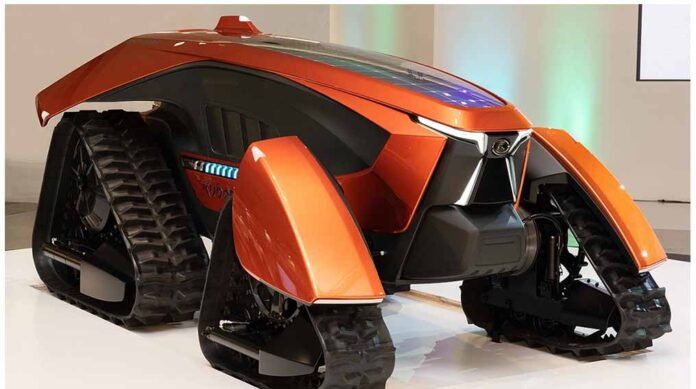by Ralph C. Martin
As a wee lad, on our home farm, I was impressed when Grampa moved manure, ploughed in perfect patterns, and hauled hay with his voice activated power units. They were even self replicating. Sometimes he would let me tug on the reins but the horses stayed on course, until Grampa called for a change.
Grampa died in time to be spared the scramble to larger equipment, larger tractors and larger farms in order to reduce hours of labour and cost of production per unit of agricultural product. However, I’m guessing he would have been curious about new power units on the agricultural horizon.
I recall a conversation with my colleague, Dr. Dave Hume, a few years ago when he said that one person could probably operate several autonomous tractors at one time from a farm office or field location. Why then would any one unit have to be so large? Why indeed?
Some of the current promotions for robotic tractors are recommending swarms of small units which may collectively do the same task, or different ones, depending on what is needed, in each field. Self-propelled robotic cover crop seeders (www.rowbot.com ) and weeders with sensors, can work 24/7. Weeders may not so much till soil but rather poke small weeds into soil or pull slightly larger weeds out.
Over 50 years ago, at Expo 70 in Japan, I had the privilege to entertain crowds as part of the Elmira District Secondary School band. Unbeknownst to me at the time, Kubota was already showcasing a prototype of their Dream tractors of the future (https://bit.ly/3rOHigv ). Their 1970 model was a bit off the mark for practical implementation, but the modern version can “adjust its height to tackle varying terrain and is equipped with four in-wheel motors to give it an ultra-sharp turning radius.”
AgXeed features an optimization option with their Agbot. “Select the field border along which you want the robot to start, choose a start and finish position, the desired overlap between paths, the number of headland passes and let it calculate the routing.” (https://bit.ly/3bJpePh ).
Large, rectangular fields may no longer be necessary. Autonomous units offer new possibilities for agroforestry with rows of high value trees on field contours, riparian zones hugging winding creek banks and wildlife corridors linking small woodlots. A small autonomous unit will efficiently find its way without mumbling about so much turning.
It seems reasonable that autonomous tractors will be more cost effective to purchase and operate, on a per acre basis, than large units with cabs and amenities for drivers. Electric units will have fewer moving parts. Furthermore, large equipment is increasingly difficult to move safely along public roads and operator time is required to make adjustments for road travel.
Compaction has been an increasing problem as tractors and equipment get larger and heavier. Certainly tracks, larger tires and low tire pressure can help spread the load but with these advances applied to smaller and lighter units, compaction will be more effectively mitigated. Furthermore, small units linked to satellite moisture data might be flexible enough to seed earlier drying land, within a field, with an earlier corn hybrid while leaving the later drying land for another day, with a slightly later hybrid, thus decreasing compaction and optimizing routing and planting times. Similar flexibility may also reduce compaction at harvest.
Wendell Berry, a farmer and author of many essays about food and farming, first elucidated the idea that there is value in increasing the ratio of eyes per acre. Autonomous units will be guided by numerous sensors and satellite data. In my opinion, a practiced eye connected to a relational and considerate human is worth 1000 sensors. Regardless of opportunities with autonomous tractors and sensors, farmers should keep observing their land directly, with their own eyes, as well as keeping sharp eyes on dashboard data.
Ralph C. Martin, Ph.D., Professor (retired),
University of Guelph.
Author of Food Security: From Excess to Enough at www.ralphmartin.ca


